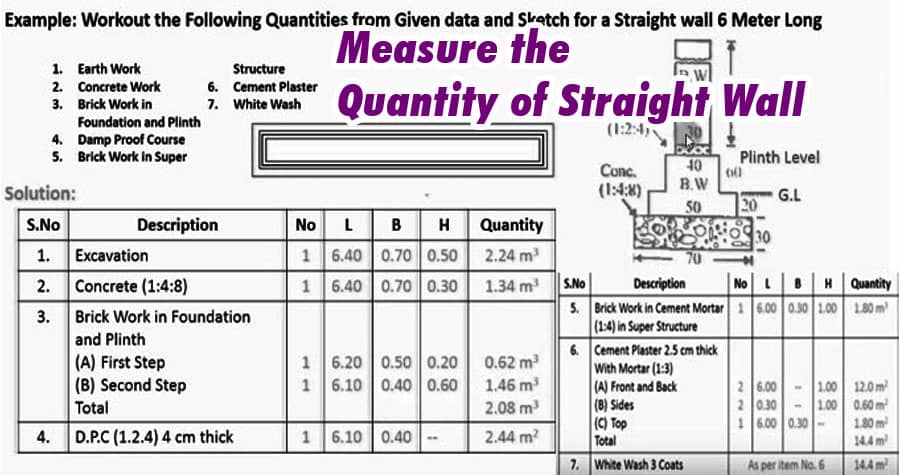Understanding the Measurement of Straight Wall Quantity in Civil Engineering

In the realm of civil engineering, the measurement of straight wall quantity holds paramount importance. Whether it's for construction projects, renovations, or assessments, accurate measurements are crucial for ensuring efficiency, cost-effectiveness, and structural integrity.
Importance of Accurate Measurement
Accurate measurement of straight wall quantity is indispensable for various reasons. Firstly, it forms the basis for estimating materials required for construction or renovation projects. Whether it's bricks, blocks, or concrete, precise measurements ensure optimal utilization and minimize wastage, consequently reducing costs.
Moreover, accurate measurements contribute to the overall quality and durability of structures. Improper measurements can lead to irregularities, weak points, and potential safety hazards. By ensuring precise measurements, engineers and contractors can uphold industry standards and deliver robust, long-lasting constructions.
Methods of Measurement
- Manual Measurement: Traditional methods of measuring straight wall quantity involve manual techniques such as tape measures, rulers, and level instruments. While these methods are time-tested and reliable, they require significant effort and may be prone to human error. However, with careful attention to detail and adherence to standardized procedures, manual measurement remains a viable option for smaller-scale projects.
- Digital Measurement Tools: With advancements in technology, digital measurement tools have revolutionized the field of civil engineering. Laser distance meters, digital levels, and CAD software enable precise and efficient measurement of straight wall quantity. These tools offer real-time accuracy, streamline the measurement process, and minimize the margin of error.
- Photogrammetry: Photogrammetry, a technique that utilizes aerial photography or digital imagery to obtain measurements, is gaining prominence in civil engineering. By analyzing images and applying geometric principles, engineers can derive accurate measurements of straight wall quantity without the need for physical presence on-site. This method enhances efficiency, particularly for large-scale projects and remote locations.
Factors Influencing Measurement
Several factors must be considered when measuring straight wall quantity to ensure accuracy and reliability:
- Surface Conditions: The condition of the wall surface, whether smooth, rough, or irregular, can impact measurement accuracy. Proper preparation and assessment of surface conditions are essential for obtaining precise measurements.
- Environmental Factors: Environmental variables such as temperature, humidity, and lighting conditions can influence measurement accuracy. It's crucial to account for these factors and take appropriate measures to mitigate their effects during the measurement process.
- Instrument Calibration: Regular calibration of measurement instruments is imperative to maintain accuracy. Any deviations or inaccuracies in instrument calibration can compromise the reliability of measurements, leading to potential errors in project estimates and execution.
For more information, please watch the following video tutorial
Source: Civil Engineering
Conclusion
In conclusion, the measurement of straight wall quantity in civil engineering is a fundamental aspect of construction, renovation, and assessment projects. Accurate measurements not only facilitate cost-effective planning and material utilization but also contribute to the overall quality and safety of structures. By employing a combination of manual techniques, digital tools, and innovative methods such as photogrammetry, professionals can ensure precise measurements and uphold industry standards.
